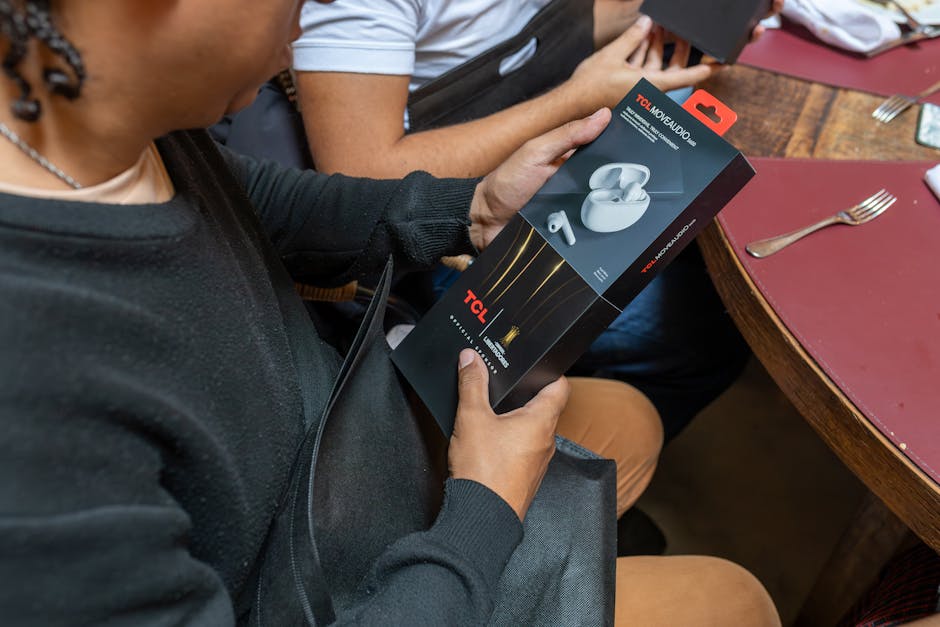Whispers of the Algorithm: Sound Design in Digital Marketing
In the bustling realm of digital marketing, every detail counts, right down to the subtle frequencies that fill our audio landscapes. You might find it surprising that the sound design behind a marketing campaign can play a pivotal role in shaping user behavior and engagement. This article will delve into the fascinating intersection of sound design and digital marketing strategies, revealing how auditory elements influence user attention spans, spur engagement, and enhance overall digital experiences. Buckle up as we explore practical implementations of sound in marketing campaigns, strategies to align auditory elements with SEO approaches, and case studies of brands that have successfully integrated sound design into their digital presence to boost conversion rates.
The Science of Sound and Its Impact on User Behavior

Sound is a powerful, yet often overlooked, tool in digital marketing. Research shows that auditory elements can significantly impact user behavior, retention rates, and brand perception. For instance, a study published by the American Psychological Association demonstrated that sounds can elicit emotional responses, significantly influencing decision-making processes. This emotional connection can be harnessed by brands to create a more immersive user experience, making them more memorable and appealing to consumers.
Consider the role of background music in online videos. Studies indicate that videos with appropriate soundtracks can increase user engagement by up to 60%. But it’s not just about any sound; the right auditory backdrop synergizes with the visual elements, resulting in a multisensory experience that captivates the audience. Brands that leverage sound effectively can transform mundane interactions into memorable encounters, promoting loyalty and enhancing user retention.
Implementing Sound into Marketing Campaigns

Crafting Sonic Brand Identities

Just as brands develop visual identities, they should also cultivate distinct sonic identities. This concept involves creating a unique auditory brand signature—like the famous “Intel Inside” jingle—that resonates with your target audience. Sonic branding can include sound logos, specific music tunes, or even unique sound effects that align with your brand’s message. For instance, Coca-Cola's use of the "Open Happiness" jingle has become synonymous with its brand ethos, enhancing brand recall and emotional attachment.
Creating a sound profile should start with understanding who your audience is and what emotions you want to evoke. For example, a fitness brand might choose upbeat, energetic music to inspire motivation, whereas a luxury brand might lean towards sophisticated classical tunes to convey elegance.
Sustainable digital practices also extend to sound design. Brands are increasingly opting for sound profiles that not only align with their values but also incorporate elements that promote relaxation and contemplation. This aligns with creating a better digital experience, encouraging longer visit times and increased interactions.
Using Sound to Boost SEO Strategies

Interestingly, sound design’s impact on SEO is becoming a central topic of discussion among marketing strategists. Search engines are evolving, considering user experience more holistically—including auditory engagement. Websites that integrate sound strategically can increase user engagement rates, reduce bounce rates, and ultimately improve their SERP rankings.
For instance, having a podcast integrated into your website can keep users on your page longer, reducing bounce rates and signaling to search engines that your content is valuable. Moreover, as artificial intelligence continues to evolve, platforms like Google are incorporating sound recognition, which means SEO strategies are expanding to include apt usage of auditory elements.
Choosing the right keywords for audio content is crucial. Consider optimizing for terms that are likely to match audio queries, including "how-to" or related questions that voice search users are likely to ask. This shift necessitates a transition from text-based SEO to a more inclusive strategy that fuses sound design and SEO efforts.
Case Studies of Successful Sound Integration
Starbucks: A Lift in Customer Mood
Starbucks is a prime example of a brand that cleverly incorporates sound into its digital and physical environments. The company uses curated playlists to create a specific ambiance in its stores. Online, they have extended this strategy by developing their music platform, “Starbucks Music,” allowing customers to share and enjoy exclusive playlists while promoting engagement with their brand.
Not only does this enhance customer experience while physically visiting stores, but it also draws customers to their app, where they can explore playlists and engage with other Starbucks fans. This sound-driven experience weaves seamlessly into their overall digital marketing strategy, fostering community and improving customer engagement.
Calm: Enhancing User Experience through Soundscapes
Calm, a wellness app, offers a prime example of how sound can foster deeper engagement in a digital platform. They curate calming background sounds, ranging from ocean waves to gentle rain, enhancing the user experience and helping users relax and focus. Their sound offerings are not just a companion; they serve as an essential element of their overall value proposition.
By integrating soundscapes that cater to their audience’s need for tranquility and focus, Calm not only stands out in a cluttered app marketplace but also achieves higher retention rates. Users spend more time on the app, exploring various soundscapes, which ultimately boosts their subscription conversion rates.
Aligning Sound Design with User Experience
Enhancing Attention Span with Strategic Auditory Elements
Attention spans are becoming shorter, with users expecting immediate gratification and engagement. Integrating sound design effectively into your marketing campaigns can help extend these attention spans. Research indicates that specific frequencies enhance focus and concentration, giving marketers a unique opportunity to capture their audience's attention.
For example, using high-frequency sounds can stimulate alertness and draw users in at the initial touchpoints on a website. According to a Harvard Business Review article, sound can also be used strategically to guide users through their web experience, subtly nudging them towards desired actions, such as clicking a call-to-action button or engaging with additional content.
Creating a Multisensory Experience
A multisensory experience can significantly enhance user engagement. Combining visual elements with auditory stimulus creates an immersive experience that is more effective than singular sensory inputs. By leveraging sound alongside visual content—like videos or slideshows—brands can create a cohesive message that resonates with their audience.
For instance, incorporating sound into videos isn’t just about background music; it can also include sound effects that align with actions on-screen. Each click, swoosh, and notification sound can amplify the user’s emotional connection with the content, creating an experience that is both engaging and memorable. This idea paves the way for marketers to think creatively about how to connect with audiences through all senses.
Next Steps: Practical Tips for Implementing Sound Design in Your Strategy
-
Research Your Audience’s Preferences: Start by identifying what types of sounds resonate with your target demographic. Conduct surveys, gather feedback, or analyze your audience's preferences to tailor sound elements accordingly.
-
Develop a Sonic Brand Identity: Create a sound profile that aligns with your brand values and resonates with your audience. Experiment with different auditory elements until you find a unique sound that becomes synonymous with your brand.
-
Integrate Audio into Your Digital Platforms: Don’t shy away from exploring different audio elements in your content. Whether it's background music for videos, sound effects for your website, or podcasts that engage with your audience, ensure that your audio choices enrich user experience.
-
Monitor Engagement Metrics: Use analytics to assess how different auditory elements impact user engagement and retention. Track data on how long users stay on your site, how many interact with audio content, and how this correlates to conversion rates.
-
Optimize for Voice Search: As audio content gains traction, consider optimizing your content for voice search. Incorporate keywords aligned with common voice search queries to capture a larger audience through audio-related content.
Final Thoughts
The world of digital marketing is evolving rapidly, and as we embrace innovation, understanding the role of sound design is becoming increasingly important. By tapping into the emotional resonance of sound and integrating it thoughtfully into marketing strategies, brands can create multisensory experiences that capture attention, foster engagement, and drive conversions.
Explore this fascinating dimension of digital marketing, and consider how sound can elevate your brand experience. Remember that effective sound design can amplify your messaging, deepen emotional connections, and transform interactions into engaging conversations that can ultimately lead to increased loyalty and sales.



